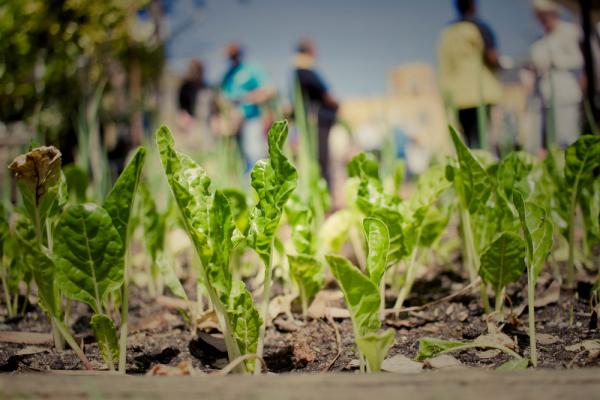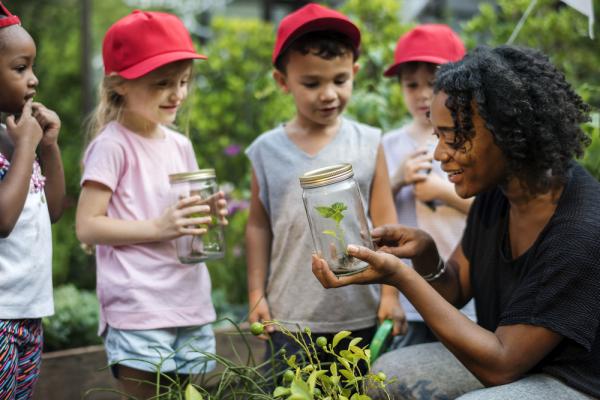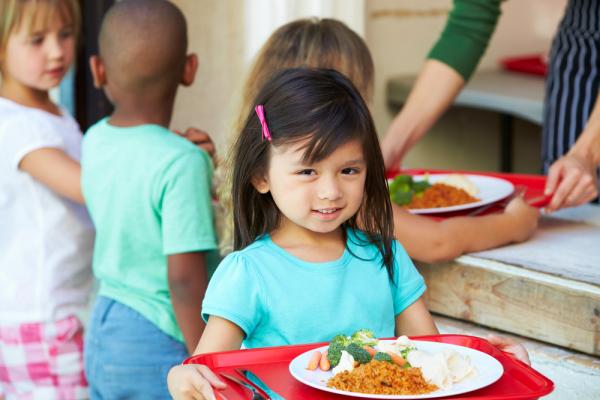March 22, 2024
Beyond the Table: Tips and Tools for National Nutrition Month
March is National Nutrition Month, a celebration established by the Academy of Nutrition and Dietetics in 1973. We’re excited to align with this year’s national theme, “Beyond the Table,” and share our top tips and resources for growing nutrition access, enjoyment, and education this month and throughout the year.
By looking beyond the table, we gain a fuller understanding of the food we eat, the people responsible for producing it, and the impact food has on our communities and cultures.
Growing Food
Getting to know the food production process helps us understand why we eat what we eat – from learning what grows in the local climate to seeing how people plant, tend, harvest, and transport food. Here are some ways to dive in:
Schools: Start or get involved with a shared garden
Sharing the space and responsibilities of growing food helps students learn about agriculture, their local environment, and the ways seasonality and climate affect what we eat. If there is space available at your school, collaborate with students, families, and staff start a school garden, like the Burtonsville Elementary School garden in Maryland. If space is available outside of school, establish or get involved with a community garden like the Weatherly Heights Community Garden in North Carolina.
Grow food in your community with this school garden toolkit.
Families: Grow an indoor container garden
Audrey Hepburn famously said, “To plant a garden is to dream of tomorrow.” She was right! When we plant a garden – no matter how big or small – we are doing something healthy for our future selves. Children of all ages can learn patience and enjoy daydreaming about their harvest when they plant herbs and green vegetables in containers your family already has.
Check out this three-step guide to growing an indoor garden.
Families and schools: Visit local farms and farmers markets
Farmers’ associations, collectives, and coalitions work together to make sure their community is represented and supported in local foodways. Some of these groups are responding to historical injustices that have limited their access to land or affected the value of their products. Many provide education, volunteer opportunities, fresh markets, and community-sustained agriculture (CSA) programs.
Use the USDA Local Food Directories to find farms near you.
Accessing Nutritious and Delicious Foods
Once food is grown and harvested, we rely on people and processes to get food into our homes and schools. Connecting with food and nutrition programs in our schools and communities can help feed our families, share with others, and learn about each other.
Schools: Encourage meal program participation
Evidence shows that eating nutritious foods improves students’ academic performance, and school meals teach young people about nutrition, culture, and food science as they try new things. More than 14 million students benefit from a healthy breakfast at school, and more than 30 million students participate in a school lunch program. These programs are available to many students at a reduced rate or for free!
Encourage students to try new foods with this at-school taste test activity.
Schools: Enrich nutrition education
People who work in school settings can incorporate fun (and delicious!) nutrition education activities in everyday learning. This can help students develop their knowledge and curiosity about food and science. Plus, the more students learn about nutrition in school, the more prepared they will be to make healthy decisions as adults.
Plan education activities with this collaborative nutrition education resource.
Families: Get connected with nutrition resources
Schools are also hubs of information and resources that help families navigate local and federal food and nutrition service programs, such as SNAP, WIC, and farmers market programs. Talk with a school staff member or community leader you trust for recommendations to join and advocate for food and nutrition programs near you. Check with your local public library, parks and recreation department, faith community, afterschool programs, and youth centers for additional support.
School and out-of-school staff, Map nutrition resources for families in your community.
Enjoying Family and Community Mealtimes
Food and time with loved ones nourish our bodies, our relationships, and our sense of community and culture. Whether you’re looking for ways to connect with loved ones or trying to save money on groceries (or both), try these tips and tools to make mealtimes meaningful and nutritious.
Families: Set time for shared meals
As your schedule allows, try setting aside one meal or more each week to eat together. This doesn’t have to be the evening meal – any time that your family can eat together can be quality time. When we share mealtimes with loved ones, kids and teens have opportunities to improve communication skills and mental health, and the whole family strengthens emotional bonds.
Connect with these communication tips and conversation starters.
Families: Plan meals to fit your budget
If you’re looking for ways to feed your family on a budget, you’re not alone. Planning meals before shopping and cooking can help families save money and reduce food waste – win, win! Why? Because when we plan meals, we purchase what we need, can make recipes with some of the same ingredients, and can base our choices on what is on sale or in season. If you receive food from WIC or your local food pantry, taking a moment to plan meals can help you get the most out of what you have.
Use this guide to help your family plan meals on a budget.
Families: Prepare meals together
Eating a meal together isn’t the only way to help children learn important skills and build your relationships. Preparing food with kids and teens helps them learn about nutrition, builds math skills, inspires curiosity about other cultures, and encourages creativity. Before you start cooking, consider your family’s food preferences, experiences in the kitchen, and any safety and accessibility concerns you need to address to make cooking more inclusive.
Review these tips for cooking with kids and teens and get creative with your young home chef!
Thank you for fostering whole child health in your family and community! Find more nutrition resources at HealthierGeneration.org and in our Action Center





